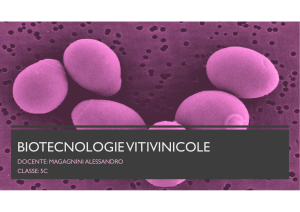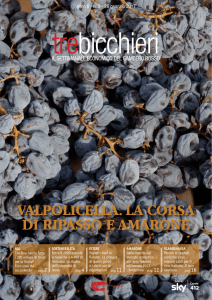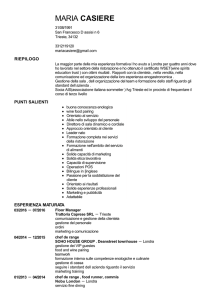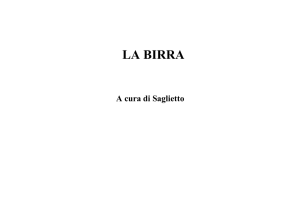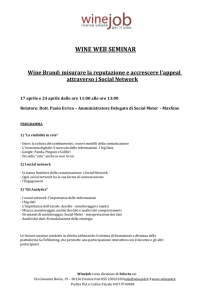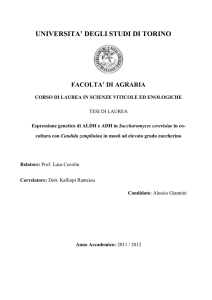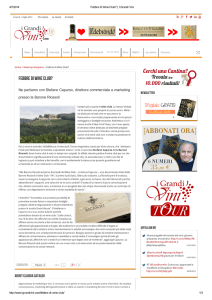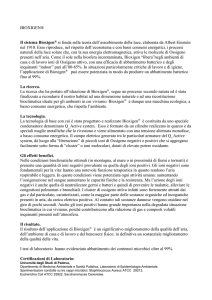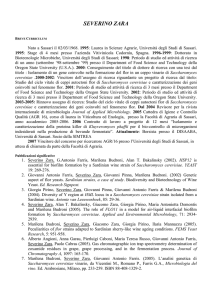Annals of Microbiology, Special Issue, 59, p
annuncio pubblicitario
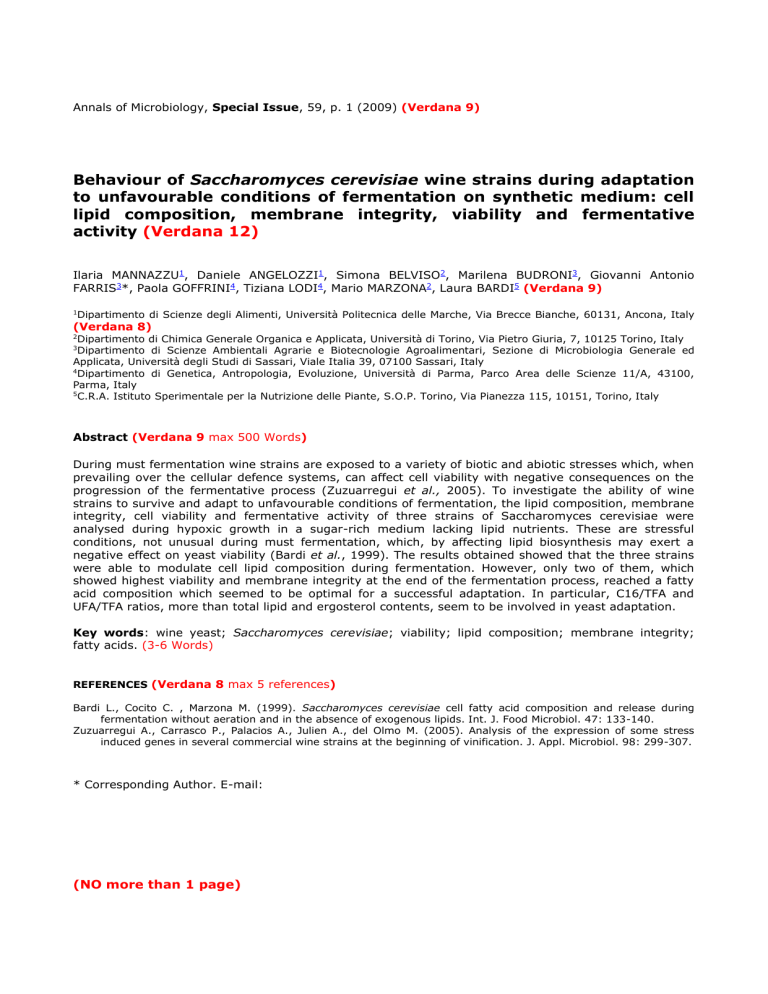
Annals of Microbiology, Special Issue, 59, p. 1 (2009) (Verdana 9) Behaviour of Saccharomyces cerevisiae wine strains during adaptation to unfavourable conditions of fermentation on synthetic medium: cell lipid composition, membrane integrity, viability and fermentative activity (Verdana 12) Ilaria MANNAZZU1, Daniele ANGELOZZI1, Simona BELVISO2, Marilena BUDRONI3, Giovanni Antonio FARRIS3*, Paola GOFFRINI4, Tiziana LODI4, Mario MARZONA2, Laura BARDI5 (Verdana 9) 1 Dipartimento di Scienze degli Alimenti, Università Politecnica delle Marche, Via Brecce Bianche, 60131, Ancona, Italy (Verdana 8) Dipartimento di Chimica Generale Organica e Applicata, Università di Torino, Via Pietro Giuria, 7, 10125 Torino, Italy Dipartimento di Scienze Ambientali Agrarie e Biotecnologie Agroalimentari, Sezione di Microbiologia Generale ed Applicata, Università degli Studi di Sassari, Viale Italia 39, 07100 Sassari, Italy 4 Dipartimento di Genetica, Antropologia, Evoluzione, Università di Parma, Parco Area delle Scienze 11/A, 43100, Parma, Italy 5 C.R.A. Istituto Sperimentale per la Nutrizione delle Piante, S.O.P. Torino, Via Pianezza 115, 10151, Torino, Italy 2 3 Abstract (Verdana 9 max 500 Words) During must fermentation wine strains are exposed to a variety of biotic and abiotic stresses which, when prevailing over the cellular defence systems, can affect cell viability with negative consequences on the progression of the fermentative process (Zuzuarregui et al., 2005). To investigate the ability of wine strains to survive and adapt to unfavourable conditions of fermentation, the lipid composition, membrane integrity, cell viability and fermentative activity of three strains of Saccharomyces cerevisiae were analysed during hypoxic growth in a sugar-rich medium lacking lipid nutrients. These are stressful conditions, not unusual during must fermentation, which, by affecting lipid biosynthesis may exert a negative effect on yeast viability (Bardi et al., 1999). The results obtained showed that the three strains were able to modulate cell lipid composition during fermentation. However, only two of them, which showed highest viability and membrane integrity at the end of the fermentation process, reached a fatty acid composition which seemed to be optimal for a successful adaptation. In particular, C16/TFA and UFA/TFA ratios, more than total lipid and ergosterol contents, seem to be involved in yeast adaptation. Key words: wine yeast; Saccharomyces cerevisiae; viability; lipid composition; membrane integrity; fatty acids. (3-6 Words) REFERENCES (Verdana 8 max 5 references) Bardi L., Cocito C. , Marzona M. (1999). Saccharomyces cerevisiae cell fatty acid composition and release during fermentation without aeration and in the absence of exogenous lipids. Int. J. Food Microbiol. 47: 133-140. Zuzuarregui A., Carrasco P., Palacios A., Julien A., del Olmo M. (2005). Analysis of the expression of some stress induced genes in several commercial wine strains at the beginning of vinification. J. Appl. Microbiol. 98: 299-307. * Corresponding Author. E-mail: (NO more than 1 page)
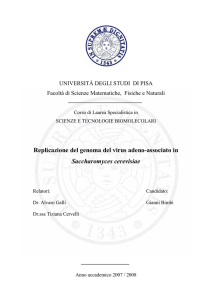
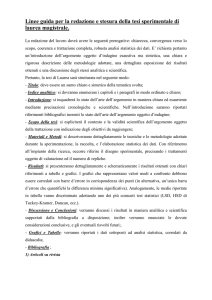
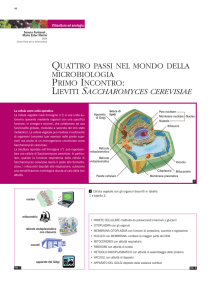
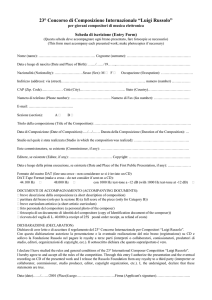
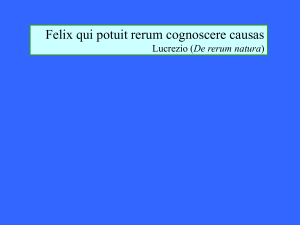
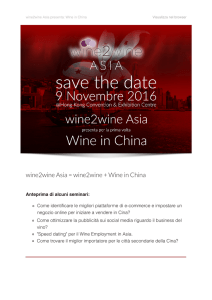
![[Ubuntu] come Installare Access WINE Playonlinux convertire](http://s1.studylibit.com/store/data/007039891_1-c20dfda507dbf521aa444cdce90a602b-300x300.png)
